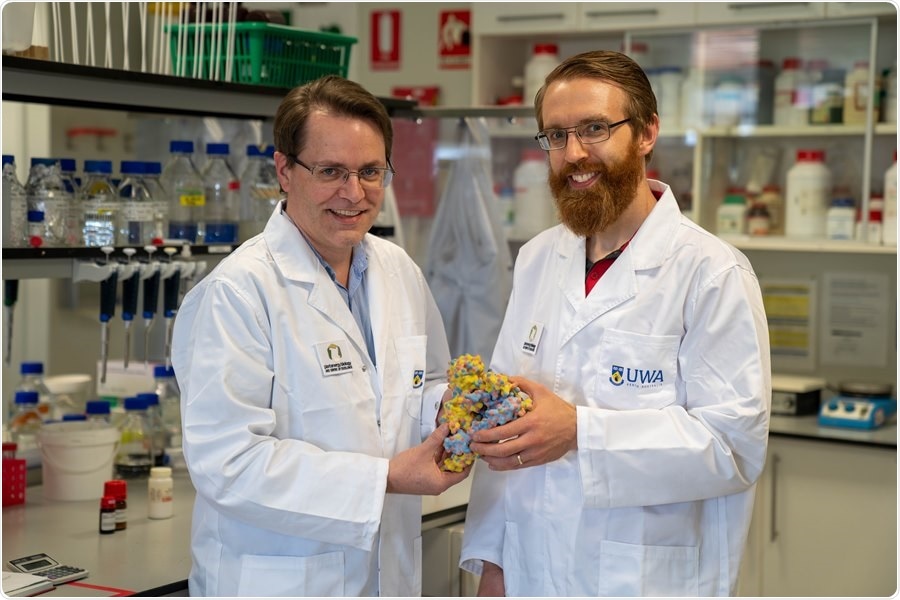Like the parts of a car that make it go, enzymes in living cells can eventually wear out or break over time, and researchers at The University of Western Australia have now discovered what determines an enzyme’s working life and what needs to be done to keep it working longer.

Image Credit: University of Western Australia
The findings, published today in PNAS, could be used to genetically engineer many types of biosystems in the future, with a range of applications for agriculture through to medicine.
Similar to the high cost of replacing engine bearings, in biological systems the replacing of enzymes is something to postpone as long as possible.
However, information about which enzyme parts have the longest and shortest working lifespans is limited, making it difficult for bioengineers to design efficient biosystems with thousands of enzyme parts.
The team from UWA’s School of Molecular Sciences and the ARC Centre of Excellence in Plant Energy Biology (PEB), in collaboration with the University of Florida and other US researchers, developed a simple, new metric – Catalytic-Cycles-till-Replacement – that quantifies how many times different enzymes are reused before they are replaced.
Using the metric, the researchers found that the replacement value varied greatly between enzymes, from as little as one use through to millions, across many different organisms.
The difference largely reflects the chemistry of the molecules each enzyme interacts with—the more chemically reactive the molecules, the more often they damage an enzyme and the more frequently it breaks.
Genetic differences also cause some enzymes to resist chemical breakage better than others.
Author Professor Harvey Millar from UWA’s School of Molecular Sciences and Director of PEB said understanding enzyme inactivation provided significant benefits.
We need to treat enzymes as biological parts that eventually wear out or break — and thus have a finite working life — in the same way a mechanical engineer considers the parts of a car. Knowing the replacement value means that we can now target the genetic engineering of enzymes to extend their working life and harness this power to address key challenges in medicine, manufacturing and agriculture.”
Harvey Millar, Author professor, UWA’s School of Molecular Sciences
Author Dr Nathan Tivendale, from UWA’s School of Molecular Sciences and PEB, said the repurposing of enzymes was part of a larger synthetic biology revolution that combined engineering principles and practices with life sciences.
Slowing the turnover of abundant, fast-turnover enzymes is predicted to substantially increase growth rates of many organisms. Ultimately, this could significantly decrease the maintenance energy budget in biosystems we use to build food, feed, fiber and medicines. It’s a rapidly expanding area of research and UWA now teaches the new science of synthetic biology in Master and PhD level courses to the next generation of biologists.”
Dr Nathan Tivendale, Author, UWA’s School of Molecular Sciences and PEB
Source:
Journal reference:
Hanson, A.D., et al. (2021) The number of catalytic cycles in an enzyme’s lifetime and why it matters to metabolic engineering. PNAS. doi.org/10.1073/pnas.2023348118.